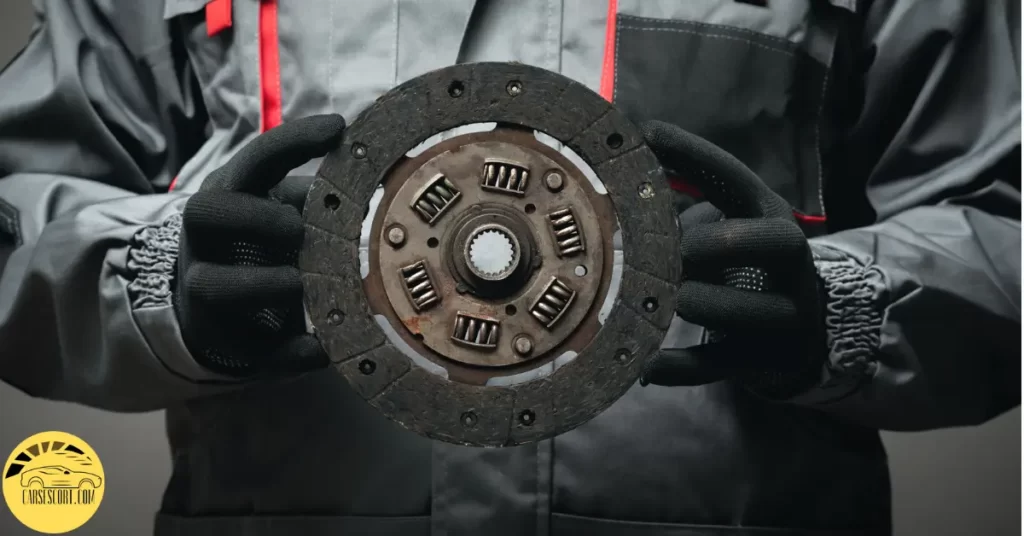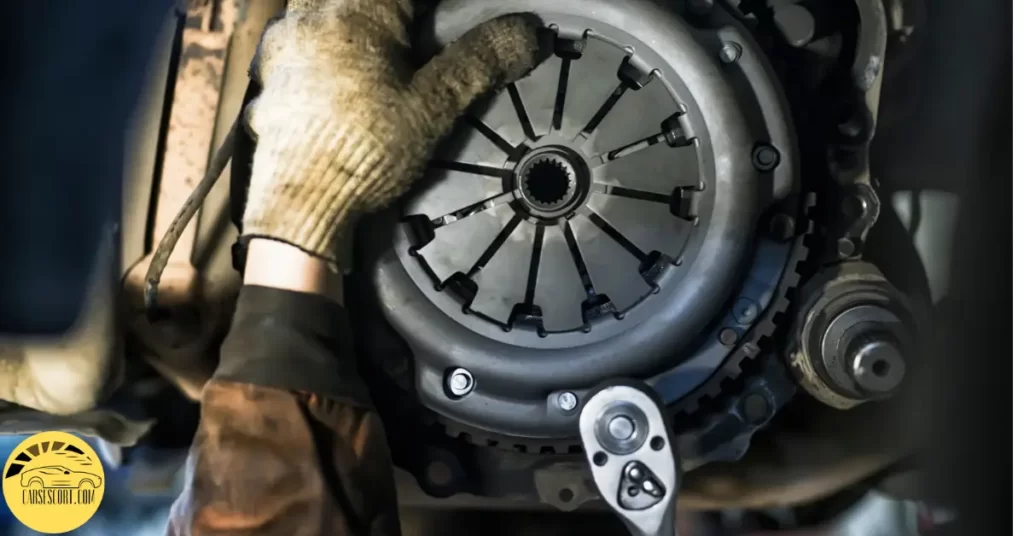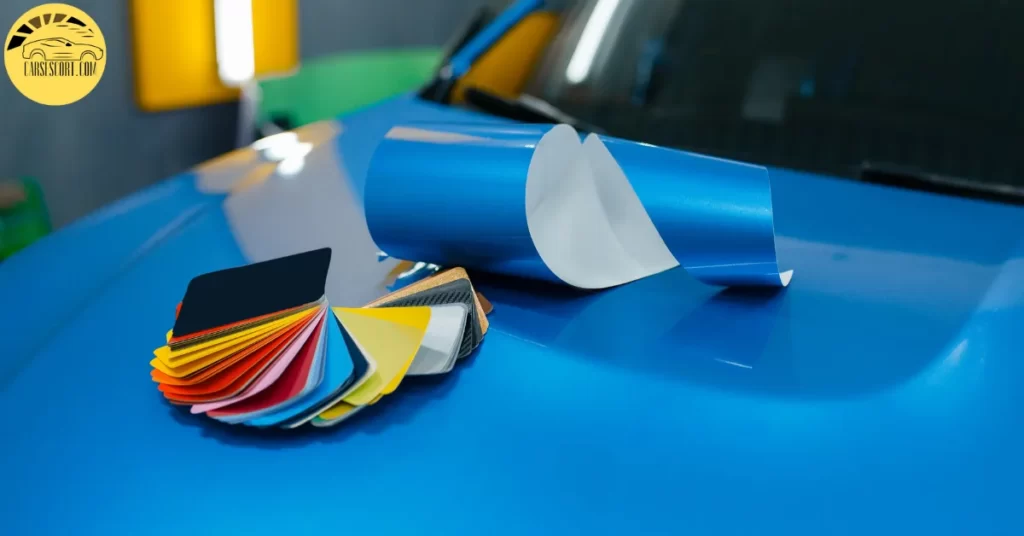Driving a manual transmission requires skill and attention to avoid damaging the vehicle. New manual drivers make one of the most common mistakes that result in burning the clutch, usually if it is not used correctly or if the driver holds it down for too long.
On common Query that manual car owners often ask is, “I Burned My Clutch A Little; what to do now?
- Take a break and let your car cool down.
- Avoid aggressive driving and excessive slipping or revving.
- Use the clutch only when necessary and avoid excessive slipping or revving.
- Check your clutch fluid for deficiency.
- Get your vehicle inspected by a professional mechanic.
- You may need to consider a replacement in case of severe damage.
In this comprehensive guide, we’ll explain what it means to burn a clutch, how it happens, and what steps you can take to prevent it from happening to your car.
How Do I Know If My Clutch Is Burnt Out?
There are few signs that can indicate that your clutch is burnt out.
1) Difficulty in shifting gears
If you are having trouble shifting gears or the gears are grinding, it may indicate that your clutch is facing some issue or is burnt out.
2) Burning smell
A burnt out clutch can emit a distinctive burning smell which can be more noticeable after driving for an extended period or up a steep hill.
3) Continues Slipping
Slipping clutch is a sing of clutch issue in your vehicle. If your clutch plate is slipping continuously, it is not fully engaging with the engine and can cause it to rev without your car moving as quickly as it should.
4) High RPMs
If your car’s RPMs (Revolutions Per Minute) are unusually high when accelerating, it can indicate clutch wear or your clutch is slipping or not engaging properly with the engine.
5) Engine Sounds
You may notice a change in the sound of your engine and may also hear strange noises when changing gears. If it sounds like it is struggling or making unusual noises, it could indicate that your car’s clutch is burnt out.

I Burned My Clutch A Little: What To Do Now?
If you have burned your clutch a little, there are a few essential considerations you can follow to prevent further damage and ensure that your car continues to run smoothly.
1) Take a break from the driving
If you have face clutch plate burns situation , it is best to take a break and let your car cool down. Resting your vehicle for a while will help prevent further damage.
2) Change your driving habits
If you have been driving aggressively or riding the clutch, you may need to change your driving habits. Use it only when necessary and avoid excessive slipping or revving.
3) Check the fluid levels
Slipping can occurs due to low or contaminated cluth fluid levels. Check your car owner’s manual for instructions on how to check and top off the fluid.
4) Inspect your clutch disc
If it continues to slip or feel abnormal, it may be time to get it checked by a mechanic. They can diagnose any potential issues and make any necessary repairs.
5) Consider a replacement
If case of severe damage, you may need a replacement. Clutch replacement can be costly, but it is essential to maintain the health and longevity of your car.
How To Fix A Burnt Clutch?
Fixing a burnt clutch typically involves replacing worn-out components or the entire disk. If you don’t have any mechanical knowledge, seek professional mechanic help.
1) Identify the problem
If you suspect excess wear or your clutch burns, you may notice symptoms such as slipping, difficulty shifting gears, burning smells, and unusual sounds when you press the clutch pedal.
2) Inspect the Disk
Remove the transmission to inspect the clutch assembly. Check the disc, pressure plate, brake pads , flywheel and other friction material for signs of wear or damage.
If the disc is glazed or has hot spots, it may need to be replaced. The pressure plate may also need to be replaced if it’s worn or damaged. The flywheel part may need to be resurfaced or replaced if damaged.
3) Replace the worn-out components
Once you’ve identified the worn-out or damaged components, you’ll need to replace them.
You can do this yourself if you have the proper tools and experience, or you may want to take your vehicle to a professional mechanic.
4) Reassemble the clutch assembly
After replacing the worn-out components, you must reassemble the clutch assembly. Follow the manufacturer’s instructions and torque specifications when installing the new components.
5) Test drive
Take your vehicle for a test drive without heavy load and pay attention to how it shifts and how it feels. If everything feels normal, you should be good to go.

You May Also Like To Read:
What causes a burnt clutch?
A burnt clutch surface is typically caused by excessive friction between the plate and flywheel. This friction generates heat that can damage the clutch and surrounding components.
Riding the clutch pedal can also cause severe damage, which means holding the clutch partially engaged while driving and putting unnecessary stress, which can cause it to overheat and burn.
Using the clutch to hold the vehicle stationary on difficult tracks, such as hills or using the it to slow down the vehicle can also cause excessive wear and damage to the disc.
Other causes include:
- Improper adjustment of the clutch pedal or cable.
- Driving on steep inclines or towing heavy loads.
- Aggressive driving styles involve excessive acceleration or sudden braking.
Overheating Clutch Symptoms
- Burning smell
- Difficulty shifting
- Slipping
- Vibration
- Noise
- Soft or spongy pedal
- Sticking
- Reduced performance
What to do if the clutch overheats?
If your clutch overheats, you should first stop driving and let it cool down. Driving with an overheated disc can cause serious damage to your vehicle.
Once the clutch has cooled down, check for any signs of damage or wear. Check the fluid level, as low fluid levels can cause overheat.
If you notice any damage or wear, or if the fluid level is low, you should take your vehicle to a mechanic to inspect and repair it. They can determine the cause of the overheating and will help to fix the issue.
It’s important to avoid driving in a way that can cause the clutch to overheat in the future, including Avoiding excessive slipping, downshifting at high speeds, and riding the clutch pedal.
Can I drive with a burnt clutch?
Driving with a burnt clutch is unsafe for you or your vehicle. It can cause further damage to the components, compromise the safety of your vehicle, and potentially cause accidents on the road.
How to drive with a burnt clutch?
If you find yourself in a situation where you must drive with a burning-out clutch, here are some tips to help you do so safely:
Tips for Driving with a Burning Out Clutch
- Avoid revving the engine excessively or accelerating too quickly when driving with an overheated clutch.
- Shift gears as smoothly as possible to minimize the stress on the clutch.
- Avoid rapid gear changes or downshifting to slow down the vehicle.
- Choose a route that avoids steep inclines or hills.
- Limit your driving time as much as possible.
- Use the handbrake instead of holding the car in gear with the clutch pedal.
- Replace the clutch to prevent further damage to the vehicle.
What is Cascadia Clutch overheating?
The Cascadia Clutch is a Freightliner Cascadia heavy-duty truck component responsible for transferring power from the engine to the transmission. Overheating of the Cascadia Clutch can be caused by friction due to a worn or improperly adjusted clutch, aggressive driving, or towing heavy loads.
Overheating of the clutch can cause damage to the surrounding components and compromise the safety and performance of the vehicle.
FAQ
What does the burning clutch smell indicate?
A burning clutch smell usually indicates that the clutch is overheating due to excessive friction. Several reasons can cause burning smell, such as riding the clutch, improper adjustment, aggressive driving, or towing heavy loads.
Why does the clutch pedal feel harder or softer than usual?
If the clutch pedal feels harder than usual, it may be a sign of a problem with the hydraulic system. The problem can be due to a leak in the system or a malfunctioning component, such as the master or slave cylinder.
If the clutch pedal feels softer than usual, it may indicate that the clutch is worn and needs to be replaced.
Will a burnt clutch consume more fuel?
A burnt clutch can consume more fuel than a properly functioning disc because the additional friction generated causes the engine to work improperly, increasing fuel consumption.
How long does a burnt clutch smell last?
The burnt clutch smell usually dissipates within 5-15 minutes. However, sometime the smell may linger for several hours or even days.
What are the first signs of clutch failure?
The first signs of clutch failure may include slipping or difficulty shifting gears, a burning smell, a soft or hard pedal, or abnormal noises such as grinding or squealing.
Should I press the clutch while coasting?
In general, pressing the clutch while coasting in gear is unnecessary. However, it is important to downshift and engages the clutch when slowing down or stopping to avoid stalling the engine.
Coasting in neutral with the clutch disengaged can also increase fuel consumption and wear on the clutch.
Is it better to release the clutch slowly?
Releasing the clutch slowly can help prevent the clutch from slipping and reduce wear on the clutch and surrounding components.
However, it’s important to release it smoothly and at an appropriate speed for the given driving conditions to avoid stalling the engine or putting unnecessary stress.
Can you burn out a clutch in one day?
While it is possible to burn out a clutch in one day, it’s more commonly the result of long periods of driving with poor technique, such as riding the clutch, aggressive driving, or towing heavy loads.
In most cases, burning out is a gradual process that occurs over time due to wear and tear on the clutch components.
Affiliate Disclosure: Cars Escort is a participant in the Amazon Services LLC Associates Program. As an Amazon Associate, we earn from qualifying purchases made through affiliate links on our site. Read Our Disclaimer .

